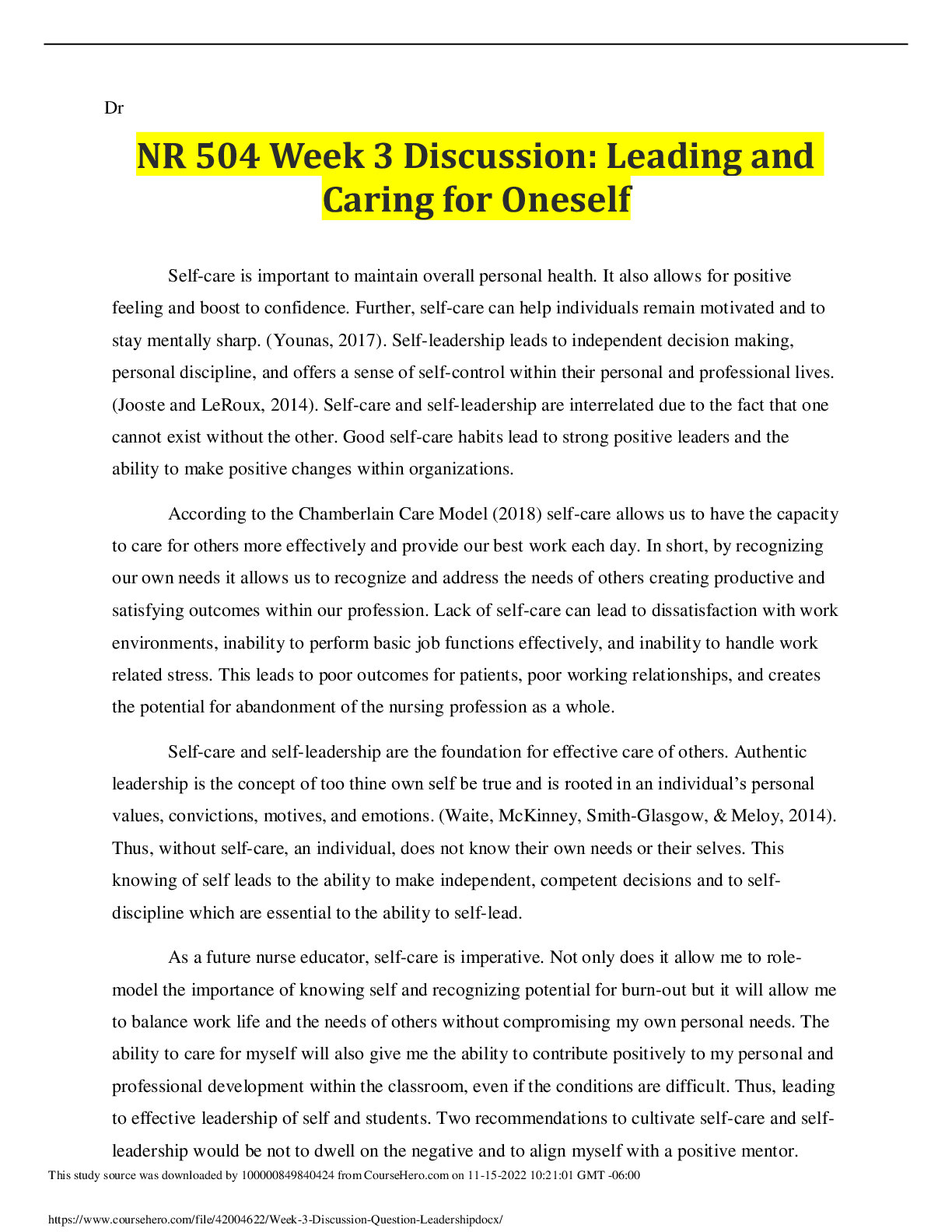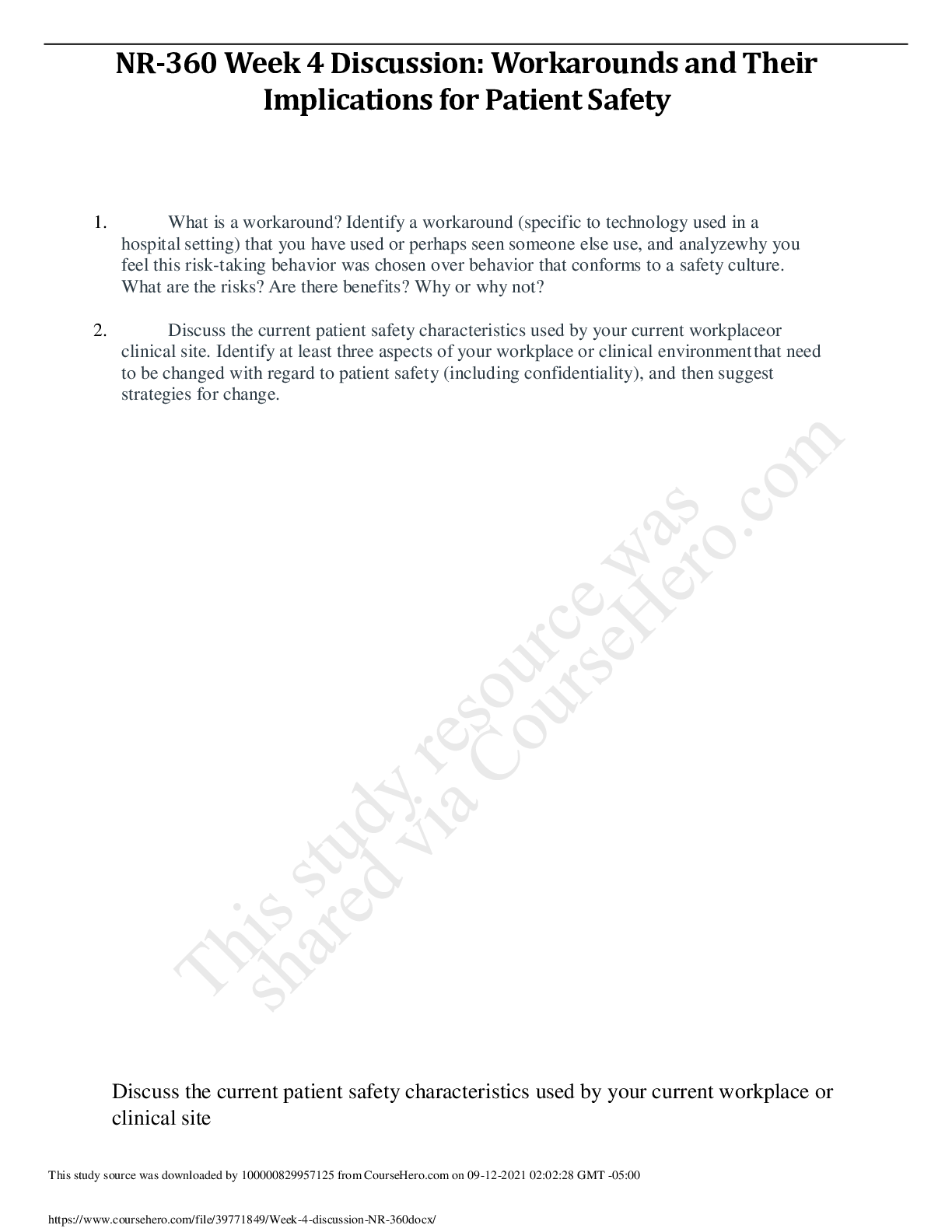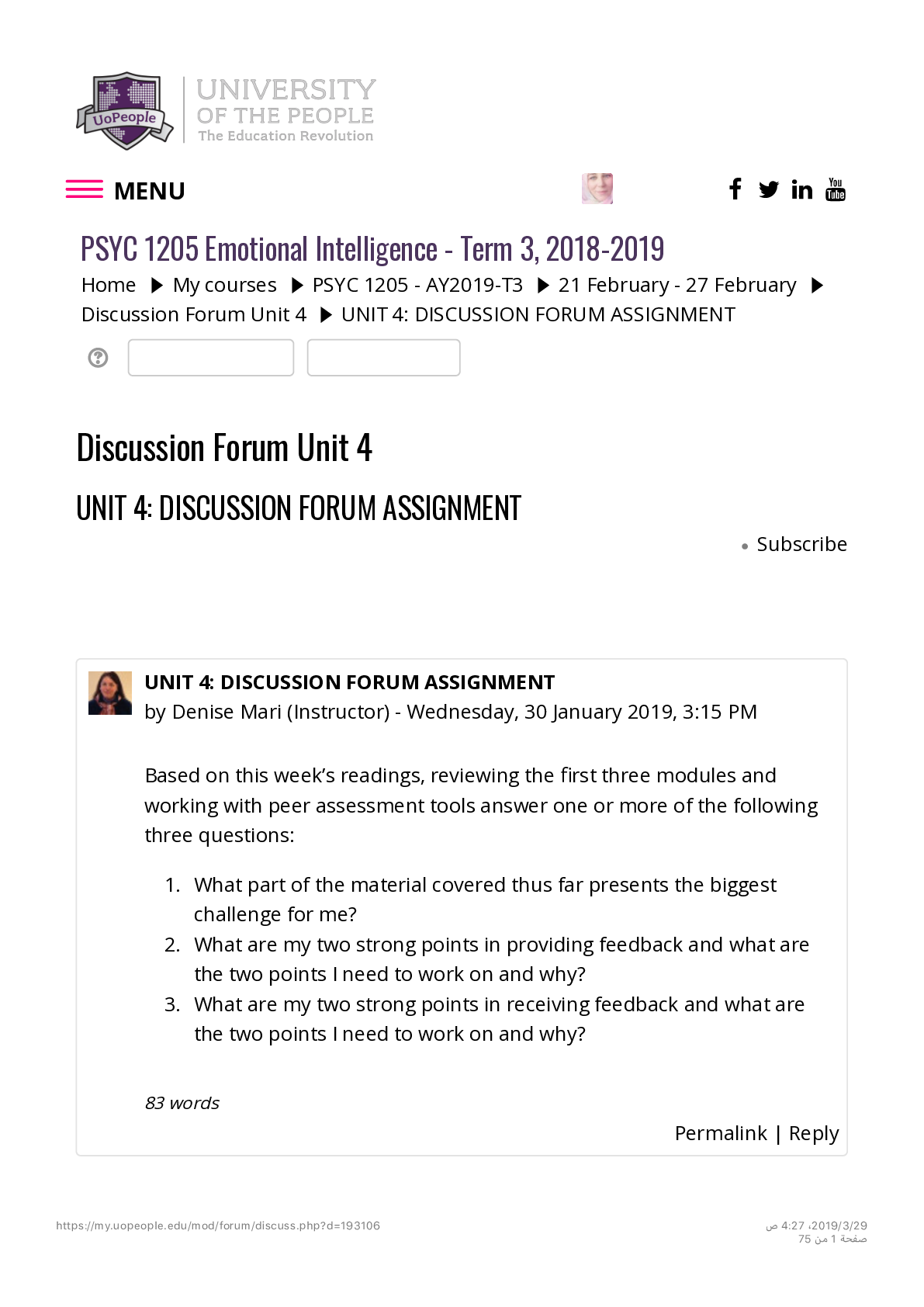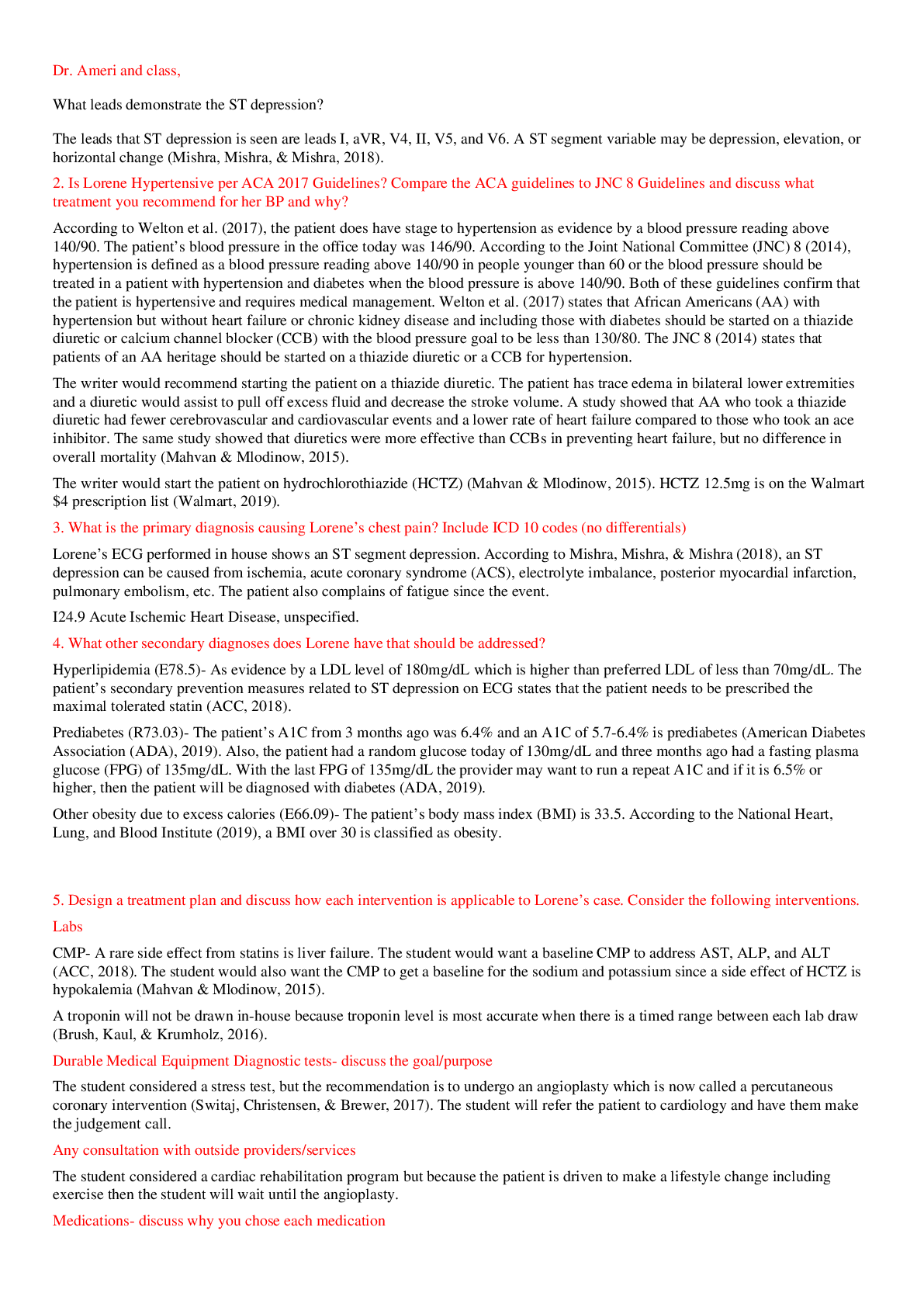*NURSING > DISCUSSION POST > NR 360 Unit 4 Discussion Topic: Workarounds and Their Implications for Patient Safety (Summer 2022)- (All)
NR 360 Unit 4 Discussion Topic: Workarounds and Their Implications for Patient Safety (Summer 2022)-Chamberlain College Of Nursing( DOWNLOAD TO SCORE)
Document Content and Description Below
1. What is a workaround? Identify a workaround (specific to technology used in a hospital setting) that you have used or perhaps seen someone else use, and analyze why you feel this risk-taking beha... vior was chosen over behavior that conforms to a safety culture. What are the risks? Are there benefits? Why or why not? 2. Discuss the current patient safety characteristics used by your current workplace or clinical site. Identify at least three aspects of your workplace or clinical environment that need to be changed with regard to patient safety (including confidentiality), and then suggest strategies for change. Hi, Professor and the Class, A workaround is a type of behavior that intends to circumvent systems in order to accomplish a work task (Effken, McGonigle, & Mastrian, 2015). The system is perceived as a workflow block and a user temporary “solves” the problems by a number of ways, such as sidestepping “dubious” rules or poor workflow design, bypassing workflow blocks created by workplace’s safety components, or to simply save time (Debono et al., 2013). A workaround that I have come to witness during my clinical experience was a nurse failing to perform a double check for a high-risk medication. When analyzing why that nurse chose this risk-taking behavior, several thoughts crossed my mind: the nurse was tight on time for passing medications to her patients (high nurse/patients ratio) and the healthcare facility had shortcomings in staffing, which made it difficult to find an available nurse at that minute to verify the dosage of the high-risk medication. This major deviation from best practice can put patients at risk for poor outcomes. The nursing profession is a high-hazard profession in which nurses who departing from evidence-based protocols that are designed to improve patient safety and quality have the potential to kill or cause substantial harm to their patients (Seaman & Erlen, 2015). While other types of workarounds may function as confined acts of nurses’ resilience to the system or operate as adjustments to organizational and system issues, bypassing a double check for high-risk medications puts an unjustified amount of risk on patients’ safety and should be avoided as it can result in jeopardized care to patients (Debono et al., 2013). As far as benefits of this workaround, I could not identify any. This behavior sooner or later will get that nurse into big trouble at her workplace when another nurse eventually This study source was downloaded by 100000831988016 from CourseHero.com on 04-24-2022 10:07:43 GMT -05:00 https://www.coursehero.com/file/27660407/DP4-workarounddocx/ catches it and reports it to the charge nurse or she will make an error in drawing a correct dose of medication which might harm a patient. Debono, D. S., Greenfield, D., Travaglia, J. F., Long, J. C., Black, D., Johnson, J., & Braithwaite, J. (2013). Nurses' workarounds in acute healthcare settings: a scoping review. BMC Health Services Research, 13(1), 1-16. doi:10.1186/1472-6963-13-175 Effken, J., McGonigle, D. & Mastrian, K. (2015). Nursing Informatics and the Foundation of Knowledge, 3rd Edition. [Bookshelf Online]. Retrieved from https://bookshelf.vitalsource.com/#/books/9781284063691/ Seaman, J. B., & Erlen, J. A. (2015). CE. Workarounds in the Workplace. Orthopaedic Nursing, 34(4), 235. doi:10.1097/NOR.0000000000000161 Hi, Geralynn, Thank you for your post. I agree with you that some procedures are designed in such a way that nurses end up trying to bypass the system because it functions inefficiently. During my clinical I was told by a nurse that it was better to tell a patient the name and purpose of each medication about to be given before getting all of the pills out of their packages and putting them all in one cup only to have a patient refuse to take some or all of them. Otherwise, a workaround such as placing all the patient’s pills in one cup for convenience and speedy medication administration, may cause waste or errors, negatively affecting a patient’s care. In regards to patients’ safety, one aspect of my clinical environment that needs to be changed is inconsistencies in timely assessment of a patient’s skin status while on DVT compression treatment. In the unit where I was on clinical rotation, there were incidences when each nurse assumed that a patient’s skin beneath compression devices had been assessed for skin breakdown when in reality it hadn’t, and the compression sleeves were left on for too long on the patient’s legs. The patient developed second stage pressure ulcers from consistent pressure of the DVT prophylactic sleeves. A strategy to implement this change could be a computerized or written log with times when the patient began the prophylactic treatment, “off times,” and status of condition of the extremities skin post-treatment. Another aspect of my clinical environment that needs to be changed with regard to patient safety is usage of Accu-Chek devices for patients with contact precautions. Although guidelines for prevention of hospital acquired infections suggest that patient care reusable equipment can be used for the care of another patient after appropriate cleaning, I think a designation of a separate Accu- Chek machine to each patient with contact precautions for at least the duration of their hospital stay can significantly reduce the possibility of the disease transmission to another patients, thus, reducing the rates of hospital-acquired infections (Mehta et al., 2014). This study source was downloaded by 100000831988016 from CourseHero.com on 04-24-2022 10:07:43 GMT -05:00 https://www.coursehero.com/file/27660407/DP4-workarounddocx/ The last element to consider for a change in my recent clinical experience is the discharge informational documentation delivery method. During my clinical day, I had a patient assigned to me who was ready for discharge. His nurse brought to him a thick folder full of discharge paperwork, teaching points printouts and numerous brochures like “Falls and patient safety,” “Healthy diet,”” Living with PAD” etc. The patient was technology literal, he actively used his email and other application on his smartphone. This type of patient would benefit from the discharge paperwork and other useful information on how to manage his disease sent to his email or access through some kind of “hospital web-application” for patients for ease of use and access. Mehta, Y., Gupta, A., Todi, S., Myatra, S., Samaddar, D. P., Patil, V., … Ramasubban, S. (2014). Guidelines for prevention of hospital acquired infections. Indian Journal of Critical Care Medicine : Peer-Reviewed, Official Publication of Indian Society of Critical Care Medicine, 18(3), 149–163. http://doi.org/10.4103/0972-5229.128705 [Show More]
Last updated: 1 year ago
Preview 1 out of 3 pages

Reviews( 0 )
Document information
Connected school, study & course
About the document
Uploaded On
Apr 24, 2022
Number of pages
3
Written in
Additional information
This document has been written for:
Uploaded
Apr 24, 2022
Downloads
0
Views
72


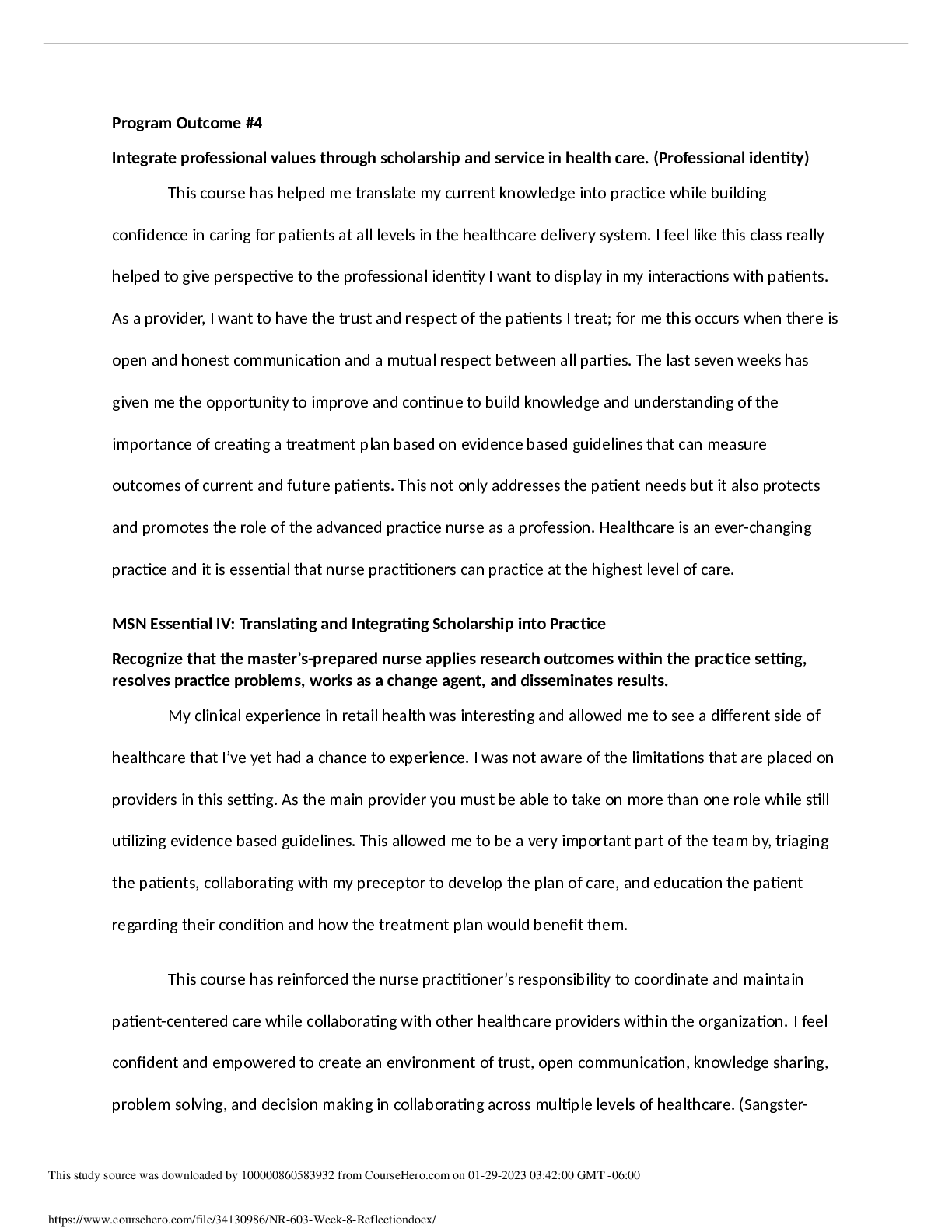
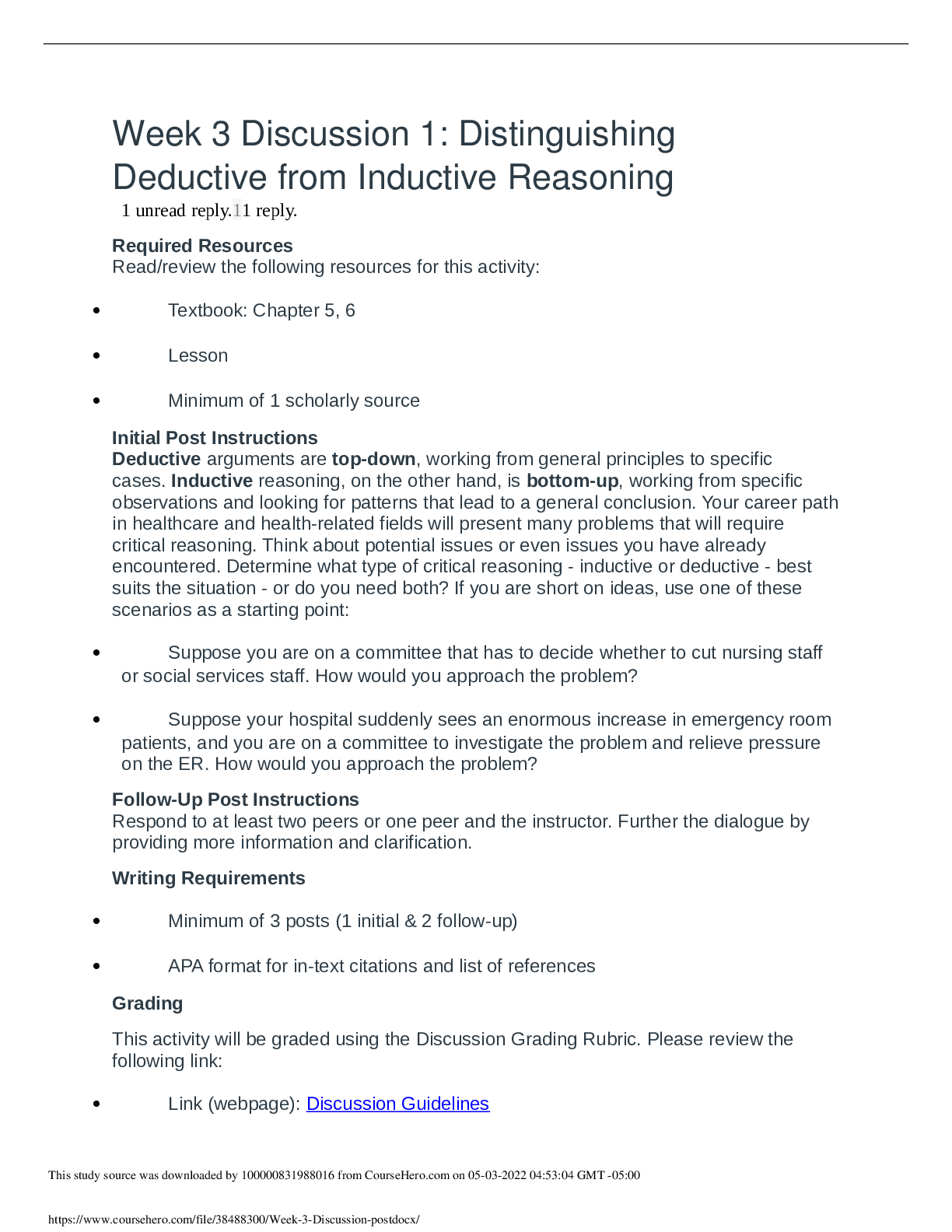

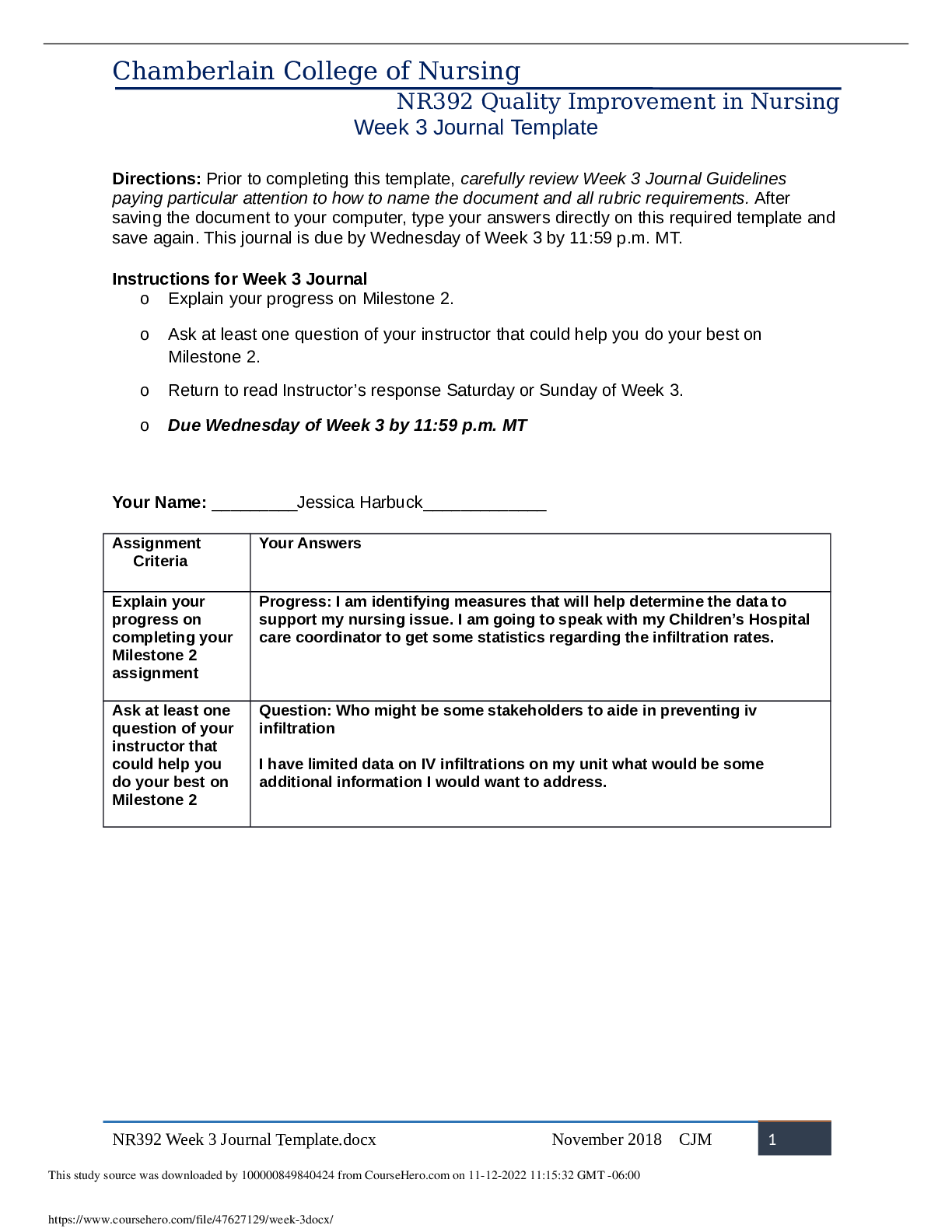

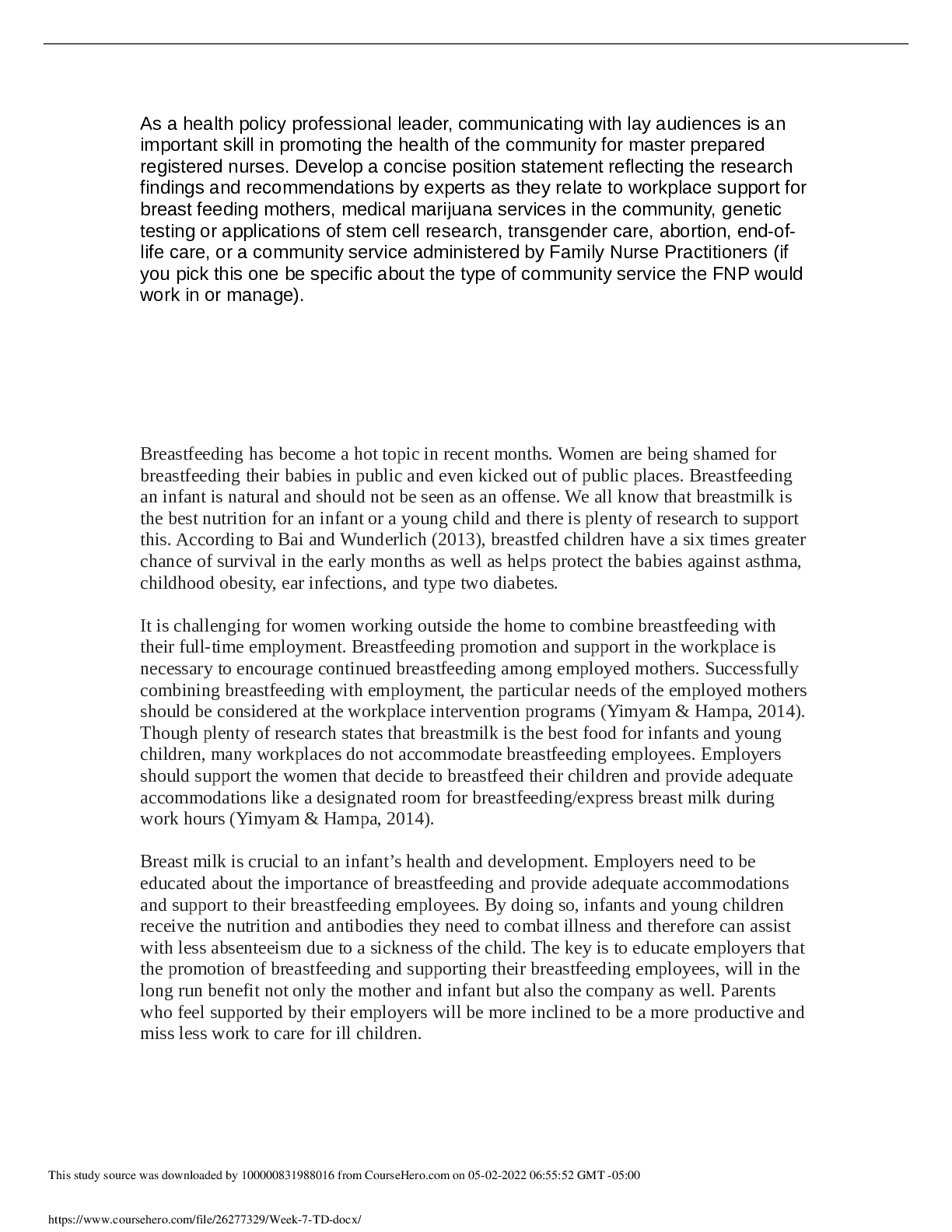

.png)

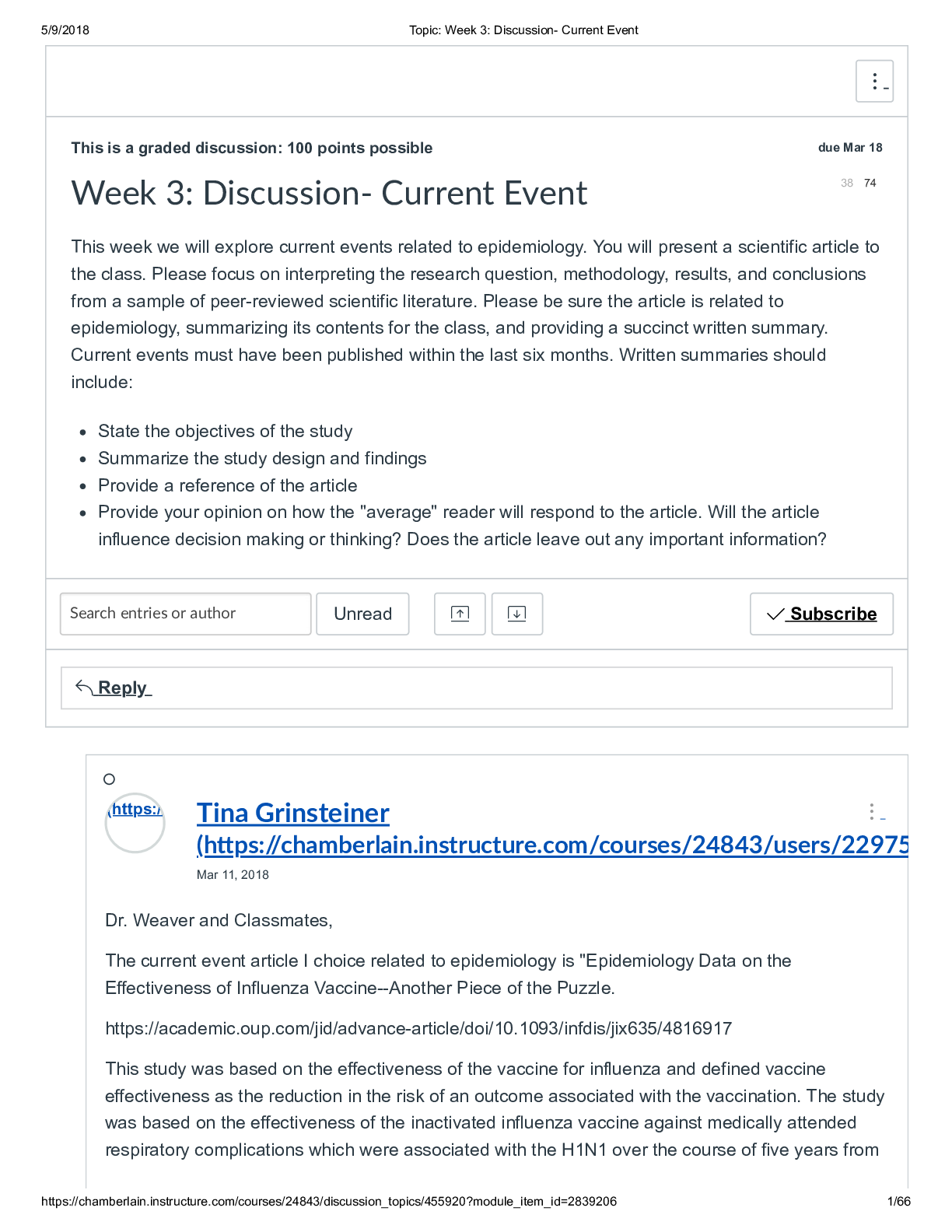
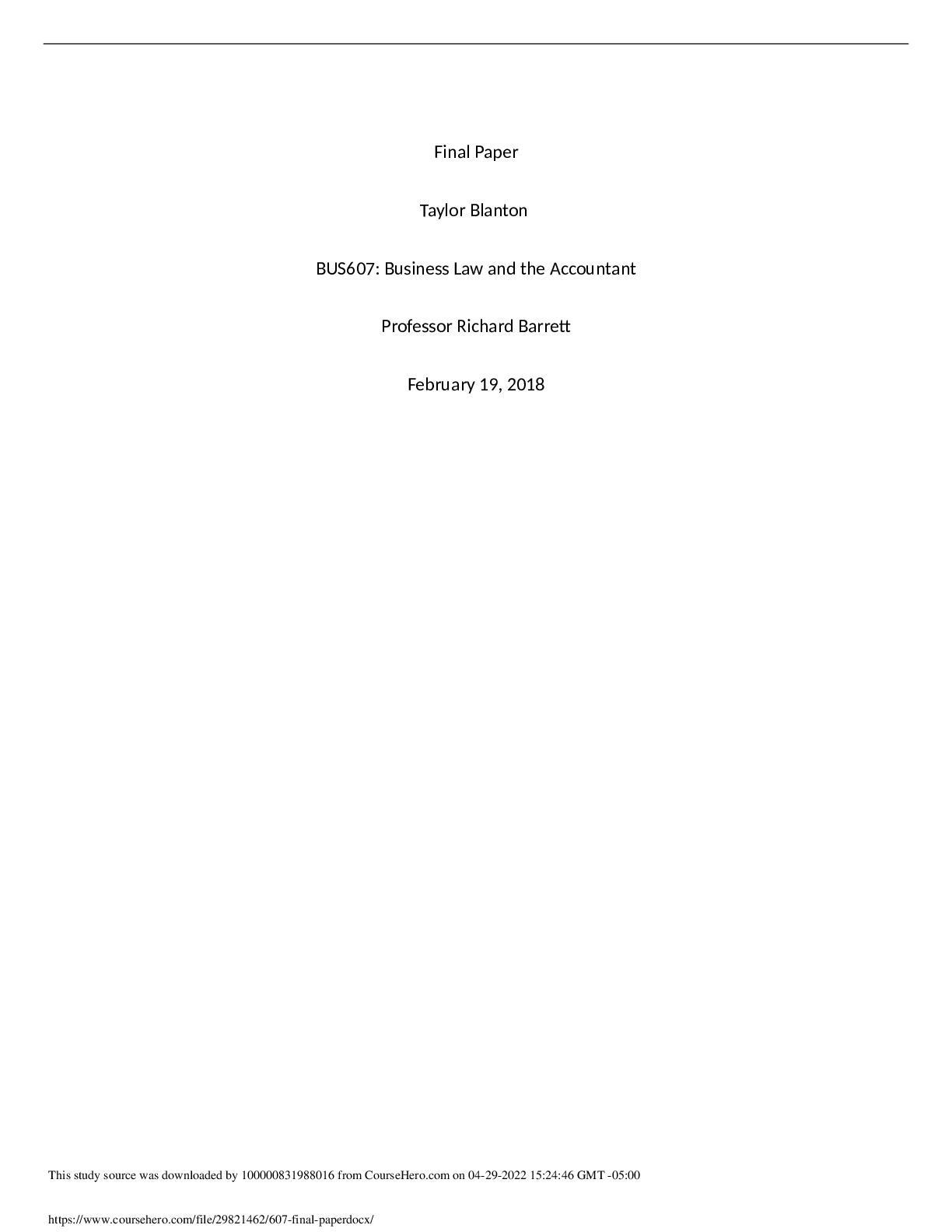
.png)
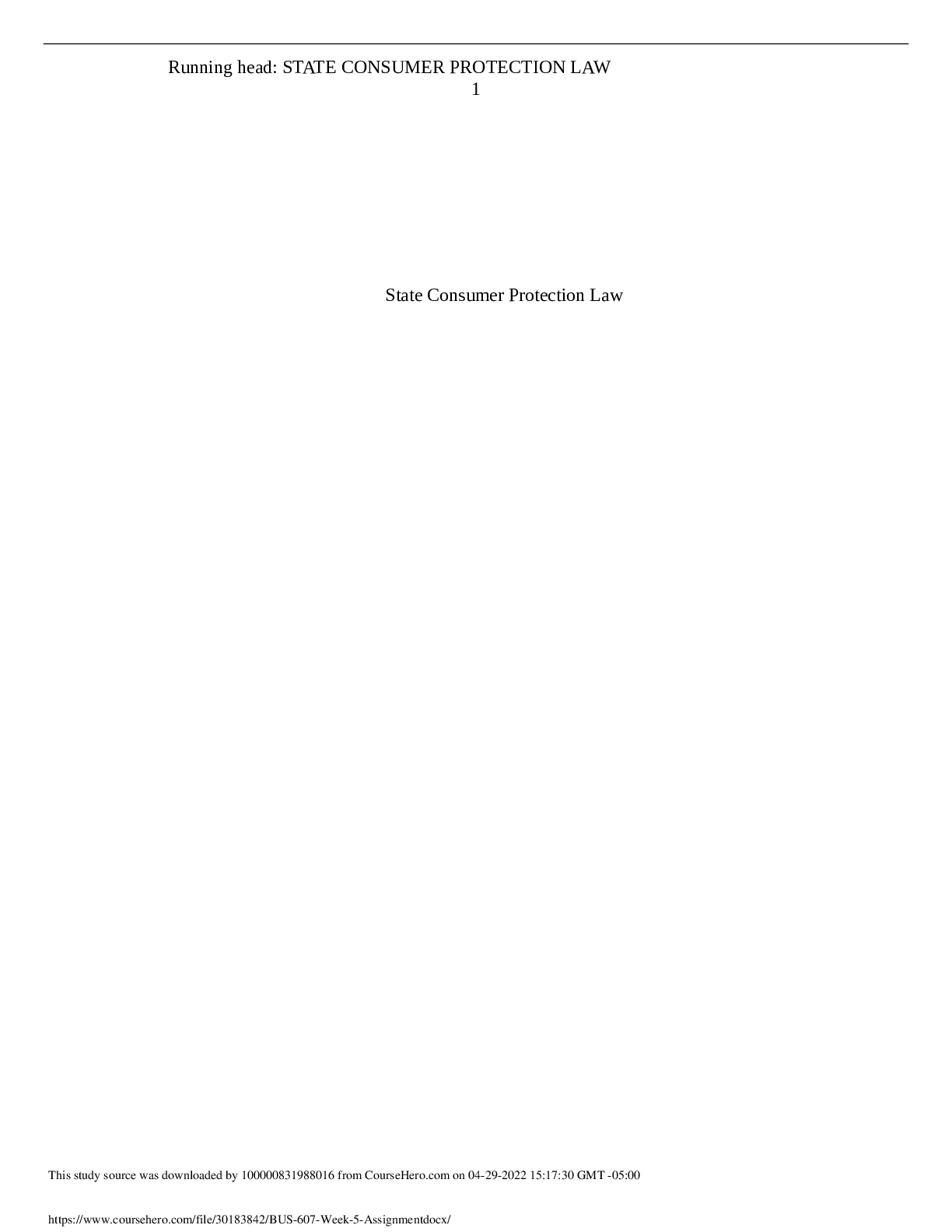
.png)
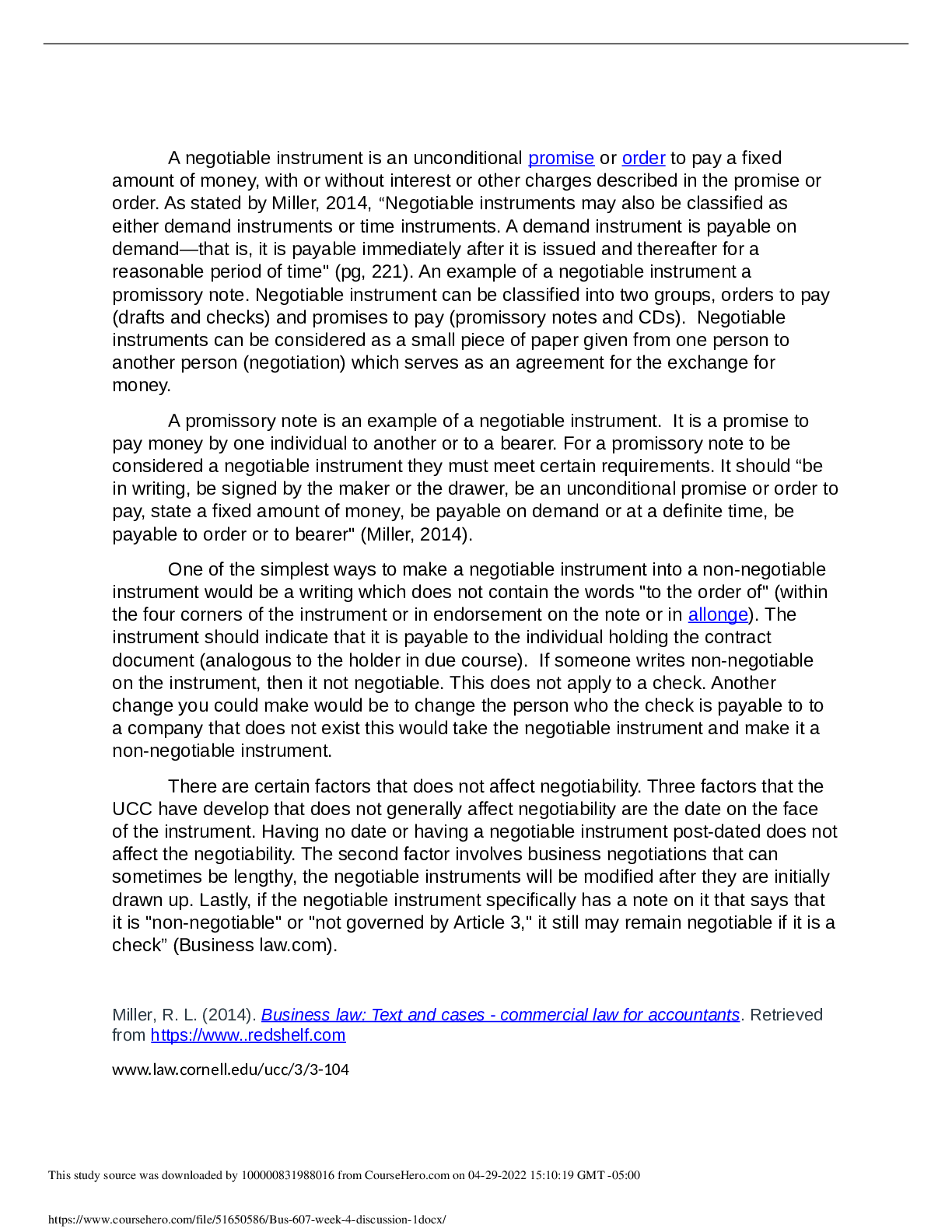
.png)
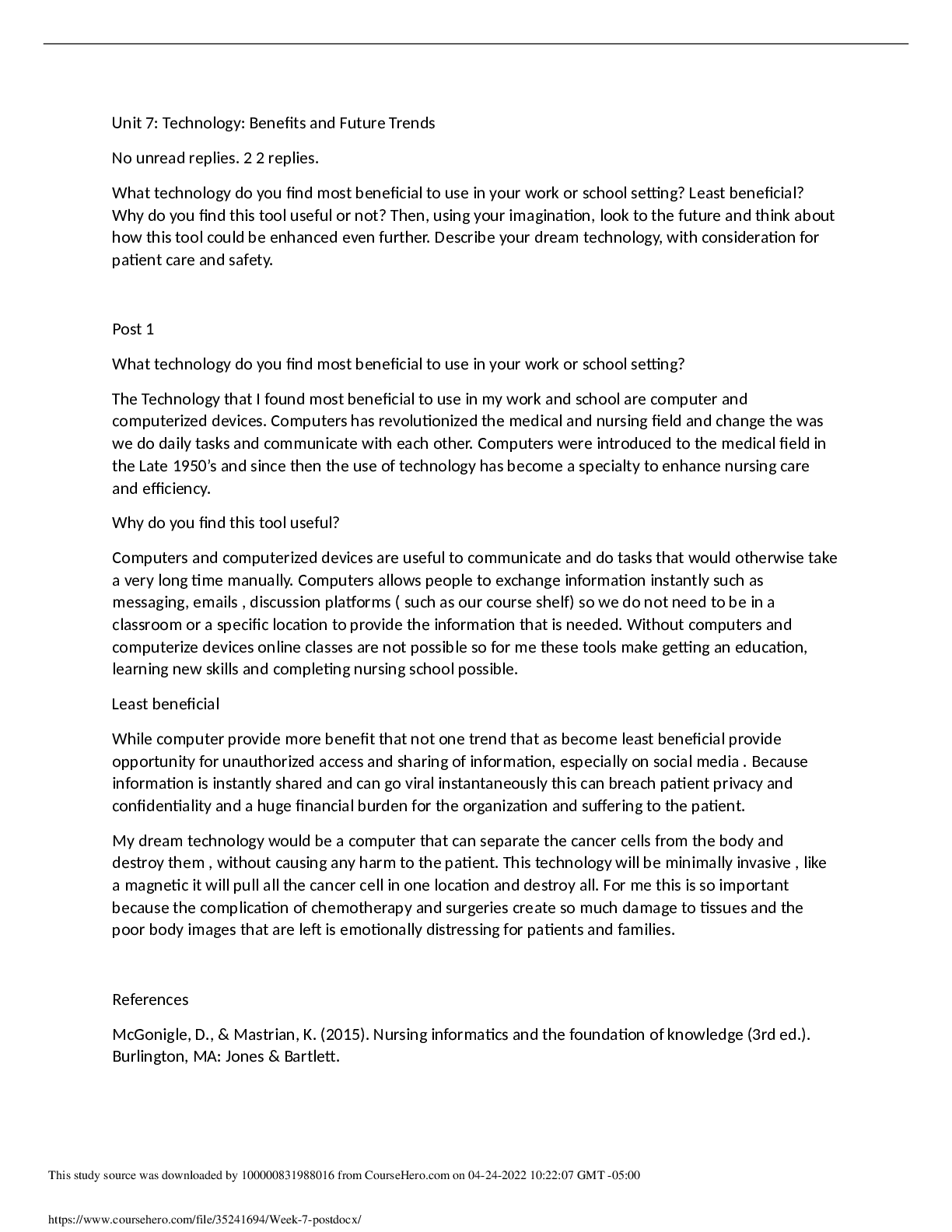
.png)
.png)
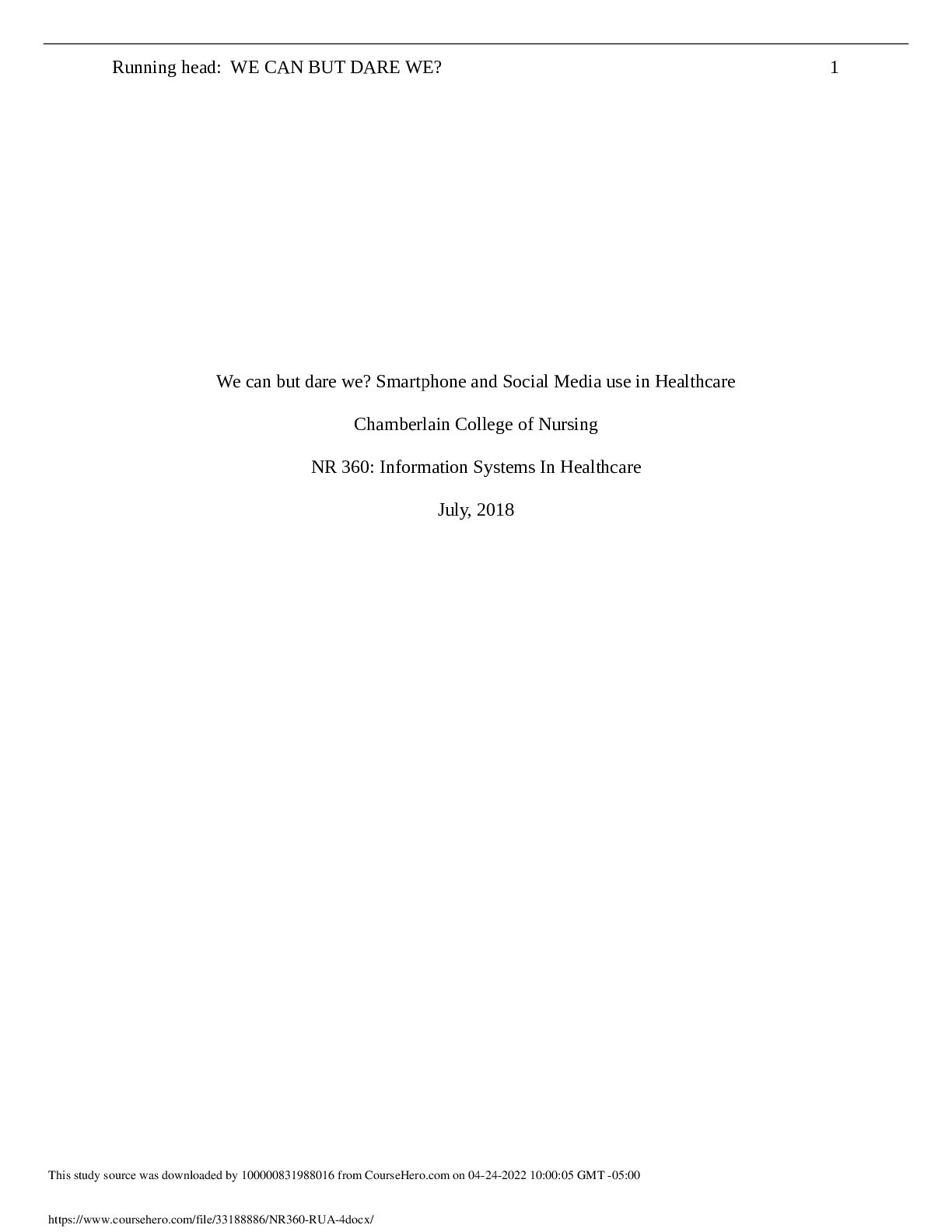
.png)
.png)
.png)
